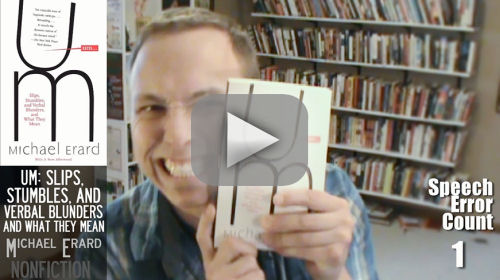Video Book Review of Um: Slips, Stumbles, and Verbal Blunders and What They Mean by Michael Erard (Video Blog ep 022)


I’ve realized during my few months of video-making, along with my previous couple of years making podcasts, that I tend to break apart my speech with ums, uhs, ers, ahhs, and every other sort of cerebral flatus out there. A desire to break away from so many speech errors is one of the reasons I picked up Michael Erard’s book Um: Slips, Stumbles, and Verbal Blunders and What They Mean. My thinking was that if I could understand why I flub my words, then I could eventually eradicate those flubs.
I’m likely beyond help, but at least this book did teach me that speech blunders are perhaps less something that needs to be cleaned away, and more something that we all need to approach differently. Speech errors aren’t, by themselves, errors at all. Instead, what’s important is measuring speech disfluency from a baseline. Think of reading ums and uhs as similar to reading a lie-detector test; we’re all our own level of nervous even without being hooked up to a spooky machine. The trick is to measure how much more nervous we get when asked potentially compromising questions.
Among the questions addressed in Um: Slips, Stumbles, and Verbal Blunders and What They Mean are
- Why is um-lessness thought of so highly?
- Why do we praise pristine speech?
- Has it always been this way?
Many theories have been created to explain the meaning of a speech error including ones from Viennese professor Rudolph Meringer who supposed that language is like a living organism whose evolution is responsible for our collective blunders; Yale psychologist George Mahl who chalks speech errors up to anxiety; and the famous Sigmund Freud who felt that speech errors were windows into the speaker’s subconscious.
Click here to watch the video review of Um: Slips, Stumbles, and Verbal Blunders and What They Mean (or click the image above). DON’T FORGET TO SUBSCRIBE TO MY YOUTUBE CHANNEL!


